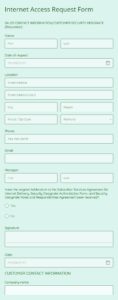In a corporate environment, where a large number of computers are used, group policies are crucial for configuring and managing user and computer settings centrally. Group policies allow administrators to easily deploy and enforce consistent configurations across the network, ensuring uniformity and security. For Microsoft Outlook 2013, a comprehensive group policy template is available, providing granular control over various aspects of the email client’s functionality and behavior.
The Outlook 2013 group policy template, also known as “Outlk15.admx,” enables administrators to configure a wide range of settings, including account settings, message handling rules, security features, and user interface options. By leveraging this template, administrators can standardize Outlook configurations across the organization, ensuring a consistent user experience and enhancing overall productivity.
Understanding the Outlook 2013 Group Policy Template
The Outlook 2013 group policy template consists of two files: Outlk15.admx and Outlk15.adml. The .admx file contains the actual policy definitions, while the .adml file contains localized text for the policy settings. To use the template, administrators must first import the .admx and .adml files into the Group Policy Management Console (GPMC). Once imported, the policy settings will be available under “User Configuration” or “Computer Configuration” in the GPMC, depending on the target of the policy.
The Outlook 2013 group policy template is divided into several categories, each containing policy settings related to specific functionalities. Administrators can expand each category to view the individual policy settings and configure them according to their requirements. The template provides extensive control over Outlook’s features, allowing administrators to customize various aspects of the application, including email account settings, message handling rules, security options, and user interface elements.
Configuring Outlook 2013 Settings Using the Group Policy Template
The Outlook 2013 group policy template empowers administrators with the ability to configure a multitude of settings within the email client. Some of the key areas that can be managed using the template include:
- Account Settings: Administrators can configure default account settings, such as the display name, email address, and server information for user accounts. This ensures consistent account configurations across the organization.
- Message Handling Rules: The group policy template allows administrators to define and enforce message handling rules, enabling automatic actions to be taken on incoming and outgoing messages. These rules can be used to filter emails, assign categories, or perform specific actions based on predefined criteria.
- Security Features: Administrators can enhance the security of Outlook 2013 by configuring settings related to digital signatures, encryption, and certificate management. These settings help protect sensitive data and ensure compliance with security policies.
- User Interface Options: The group policy template provides administrators with the ability to customize the user interface of Outlook 2013. This includes controlling the ribbon visibility, customizing toolbars, and modifying the behavior of various interface elements.
By leveraging the Outlook 2013 group policy template, administrators can streamline the deployment and management of Outlook settings across the organization. This ensures consistency, enhances security, and improves overall user productivity.
Conclusion
The Outlook 2013 group policy template is a powerful tool for administrators to centrally manage and configure Outlook settings within an organization. Its comprehensive range of settings allows administrators to tailor Outlook’s behavior and appearance according to specific requirements, ensuring a uniform user experience and enhancing productivity.
Whether it’s configuring account settings, implementing message handling rules, enhancing security features, or customizing the user interface, the Outlook 2013 group policy template provides granular control over various aspects of the email client, empowering administrators to optimize Outlook’s functionality and meet the diverse needs of the organization.
FAQ
What is the Outlook 2013 group policy template?
The Outlook 2013 group policy template, also known as “Outlk15.admx,” is a collection of policy settings that allows administrators to centrally manage and configure Microsoft Outlook 2013 within an organization.
How do I use the Outlook 2013 group policy template?
To use the Outlook 2013 group policy template, administrators must first import the Outlk15.admx and Outlk15.adml files into the Group Policy Management Console (GPMC). Once imported, the policy settings will be available under “User Configuration” or “Computer Configuration” in the GPMC, depending on the target of the policy.
What are the benefits of using the Outlook 2013 group policy template?
The Outlook 2013 group policy template offers numerous benefits, including centralized management of Outlook settings, ensuring consistent configurations across the organization, enhancing security, improving user productivity, and simplifying software deployment and updates.
